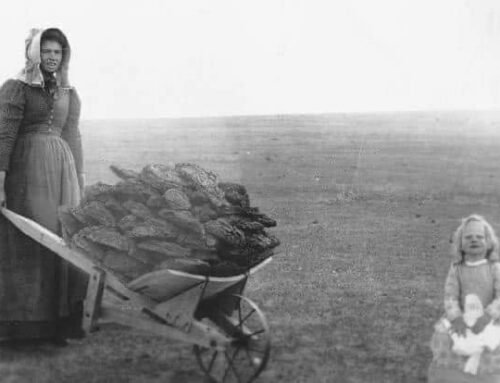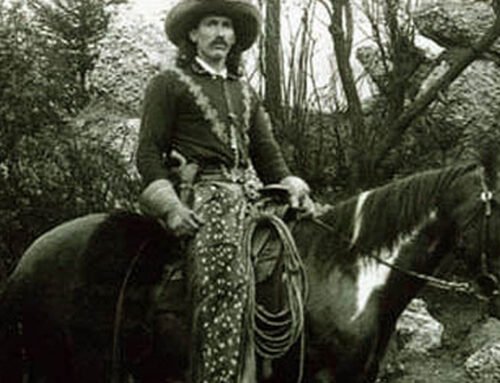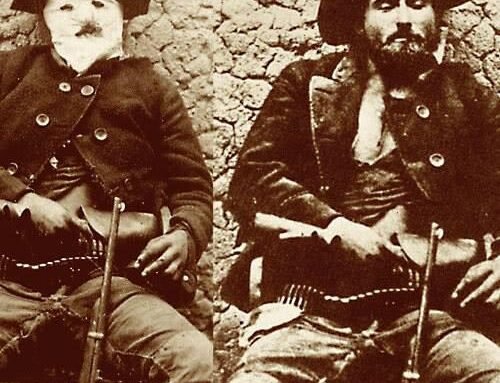Snake oil salesmen
By western author Nick Brumby
 “Good for man and beast. The most remarkable curative discovery ever made in any age or country. A liniment that penetrates muscle, membrane, and tissue to the very bone itself, and banishing pain with a power that has astonished and convinced two generations of intelligent people.”
“Good for man and beast. The most remarkable curative discovery ever made in any age or country. A liniment that penetrates muscle, membrane, and tissue to the very bone itself, and banishing pain with a power that has astonished and convinced two generations of intelligent people.”
— Label on a bottle of ‘genuine’ snake oil
‘Snake oil’. Those two seemingly innocent words bring to mind seedy profiteers, fake cures, fraudulent hucksters, fraudulent goods, frauds, quacks, traveling salesmen with dubious morals, charlatans, and a host of other suspicious characters.
‘Snake oil salesman’ was almost a cottage industry in the late nineteenth and early twentieth centuries, with shady characters and confidence tricksters hawking their questionable goods across not just the West but the entire United States.
Today, calling someone a snake oil salesman is the same as calling them a liar or a con artist, hustling a quick dollar by selling products that promise the world but are guaranteed only to fail.
But how did ‘snake oil’ become one of the most recognizable aspects of Old West history?

In 19th century America, snake oil was commonly promoted as a cure-all. Money was tight, doctors and physicians were scarce, and people suffering from painful or embarrassing medical conditions often jumped at the chance to buy and try the latest ‘cure’ or ‘remedy’.
The original belief in snake oil came to be when early American immigrants seemingly adopted native American medical customs as well as ancient British beliefs that preparations based on the adder can cure various ills. In addition, snake oil has been a folk remedy in Chinese medicine for centuries, used primarily to treat joint pain such as arthritis and bursitis.
Belief in the merits of snake oil gained a boost with the thousands of Chinese workers who arrived in the United States as indentured laborers to work on the Transcontinental Railroad. According to historian Richard White’s book ‘Railroaded’, about 180,000 Chinese immigrated to the United States between 1849 and 1882.
These workers brought their traditional medicines with them – including snake oil. Made from the oil of the Chinese water snake, which is rich in the omega-3 acids that help reduce inflammation, snake oil in its original form actually worked, especially when used to treat arthritis and bursitis. Workers who rubbed the oil on their joints after a long hard day at work experienced some relief.
 Eventually, Chinese workers began sharing their snake oil with some American counterparts, who were amazed at the results, and who wanted to make and sell a local version of the ‘cure-all’.
Eventually, Chinese workers began sharing their snake oil with some American counterparts, who were amazed at the results, and who wanted to make and sell a local version of the ‘cure-all’.
The problem was that the US didn’t have any Chinese water snakes. Shysters looking to get rich quick by making their own fake elixirs made do with a plentiful native species, the rattlesnake. The fact that rattlesnakes did not have the same medicinal properties did not matter. Success was guaranteed by slick sales spiels and taking advantage of desperate customers.
Many snake oils contained lead, mercury, or arsenic, and sometimes all three. Others had mustard oil, pine oil, oil of wintergreen, camphor, or petroleum. It is a safe bet to assume each and every one of these concoctions were foul-tasting. Even so, their taste was often overshadowed by opium, laudanum, cocaine, or staggering amounts of grain alcohol.
 Most snake oils were profoundly addictive. Because of this, some of the earliest opponents of snake oils were the goodly and pious ladies of local temperance societies.
Most snake oils were profoundly addictive. Because of this, some of the earliest opponents of snake oils were the goodly and pious ladies of local temperance societies.
There were no federal regulations in the United States concerning the safety and effectiveness of drugs until the 1906 Pure Food and Drug Act. Thus, the sale and availability of snake oil with no known properties or origin persisted in the US for a much longer than in Europe.
Now the stage was set for someone to make a fortune – and entrepreneur Clark Stanley, aka ‘The Rattlesnake King’, stepped up. In 1897 the former cowboy claimed he had learned about the healing power of rattlesnake oil from Hopi medicine men. Cleverly, he never publicly mentioned Chinese snake oil at all. Stanley hit the front page at the 1893 World’s Exposition in Chicago, when he sliced open a live snake before a crowd of onlookers, boiled the carcass and harvested the oil that floated to the top.
Stanley made a fortune until Federal investigators seized a shipment of Stanley’s Snake Oil in 1917, and found that it contained mineral oil, beef fat, red pepper and turpentine. What it did not contain was snake oil, rattlesnake or otherwise. That’s right — Stanley’s snake oil did not contain a drop of actual snake oil, and thousands of customers discovered they had been had.

Stanley pleaded ‘no contest’ to the allegations against him, also not admitting guilt. His plea was accepted, and as a result, he was fined $20 (about $538 in 2022).
Snake oil and other patent medicines were often sold on the back pages of newspapers, promising to cure from chronic pain and headaches to “female complaints” and kidney trouble. They were also successfully sold during slick, often humorous demonstrations.
Often the snake oil salesman would pretend to be a doctor. The “doctor” would perform in front of a crowd, aided by a shill in the crowd who would, at a prearranged moment, call out that the snake oil had solved their woes. Once the unsuspecting public had purchased the con artists’ wares, both the ‘doctor’ and the shill would quickly depart before the townspeople discovered the worthlessness of their new snake oil.
Perhaps ironically, researchers in Japan recently tested Chinese water snake oil on laboratory mice and found that, compared with lard, snake oil significantly improved the rodents’ maze-learning ability and swimming endurance.
The Omega-3 fatty acids found in Chinese water snake oil have also been shown to reduce inflammation and offer many other health benefits, including helping to lower systolic blood pressure, improve cognitive function, reduce the risk of dementia and relieve depression.
If only the Rattlesnake King had been the Water Snake King… it could have changed the world…

About Nick Brumby
I like a good story. And of all stories, I love westerns the most.
As a kid, I spent far too many afternoons re-watching Clint Eastwood spaghetti westerns, picking up ‘Shane’ for just one more read, or saddling up beside Ben Cartwright when ‘Bonanza’ was on TV each afternoon.
I’m a former journalist and I love horses, dogs, and the occasional bourbon whiskey. I live with my wife, daughter and our ever-slumbering hound in a 1800’s-era gold mining town – our house is right on top of the last working gold mine in the area. There may not be much gold left, but there’s history wherever you look.
I hope you enjoy my westerns as much as I enjoyed writing them!
Happy trails,
Nick



























